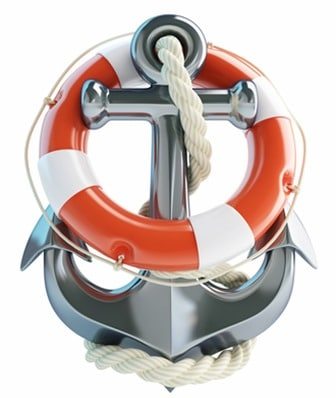Originally posted on July 17, 2016 @ 2:05 PM
Anchoring, Framing and Priming Risk

Jung understood archetypes as semiotic patterns and ‘forces’ that guide and give meaning. (http://www.nrs.fs.fed.us/pubs/gtr/gtr_ne160/gtr_ne160_025.pdf)
Jung understood symbols and signs to have a transcendent dynamic that operated on the unconscious. This is why the nature of semiotics in the study of mythology, cults and religious dynamism was so important to Jung. Archetypes operate in the symbolic realm and have unconscious power as Jung contextualizes (Hull, 1959, p. 48) ‘If thirty years ago anyone had dared to predict that our psychological development was tending towards a revival of the medieval persecution of the Jews, that Europe would again tremble before the Roman fasces and the tramp of legions, that people would once more give the Roman salute, as two thousand years ago, and that instead of the Christian Cross an archaic swastika would lure onward millions of warriors ready for death – why, that man would have been hooted at as a mystical fool’.
Jung, like many social psychological contemporaries (Zimbardo, Milgram, Adorno, Levinson, Brunswick, Allport, Lewin, Darley, Ellul etc) ‘cut their teeth’ on the Nazi problem. How could a population full of highly rational logical sophisticated people commit such atrocities? How can one explain how Propaganda works? How could the country with more Nobel Prizes than any other so systematically commit such a program? Why do people do what they do? The study of the Nazis stimulated the growth of the discipline of Social Psychology.
The reason why Jung is so relevant to thinking about Safety is because Safety has become so profoundly religious. This has been recognized by Dekker and others as a characteristic of Safety (http://www.safetydifferently.com/zero-vision-and-the-western-salvation-narrative/) and is something I have discussed before (https://safetyrisk.net/safety-for-true-believers/, https://safetyrisk.net/safety-as-faith-healing-2/, https://safetyrisk.net/supernatural-safety/). The semiotics of Safety is infused with religious narrative, imagery of salvation and perfectionism (https://safetyrisk.net/is-risk-and-safety-perfectionism-a-disorder/). The discourse of ‘saving lives’ lends itself to such symbols and signs as is common in any religion. The path to perfection is the narrative of zero. The popular Bradley Curve is a profound religious metaphor for safety.
What is most curious is when people critique safety but still anchor, frame and prime their discourse to safety. I was asked recently to present at a conference that was framed by the symbols and language of ‘beyond zero’. I was told by the organisers of the conference that they wanted to leave the discourse of zero behind and wanted to step beyond it. Yet, in framing the language and symbols of the conference they still anchored and framed the future to their discourse to zero. Zero still framed the narrative, zero was the benchmark and starting point, they had not left zero behind at all but gave the symbol even greater power by their framing. I didn’t want to speak at such a conference.
If we want to escape the archetype of Safety we need a new discourse and anchoring to people, humans, learning and living. It doesn’t make much sense to use old symbols for safety to frame and anchor a new semiotic for risk. It doesn’t make much sense to want to do ‘safety differently’ and continue to use the symbols for safety that are anchored to old safety in discourse, language and semiotics. It doesn’t make much sense to use objects and things as symbols for safety, when one wants to stimulate a new approach to people and risk. The symbols Safety is anchored to such as: PPE, bollards, barricades, zebra tape, marker cones, hard hats etc are the anchoring of Safety that symbolize a trajectory away from people and conversation to a discourse of checklists and policing. Any new approach to safety differently will need to find new semiotics and discourse that transcends the archetype of Safety.



Do you have any thoughts? Please share them below